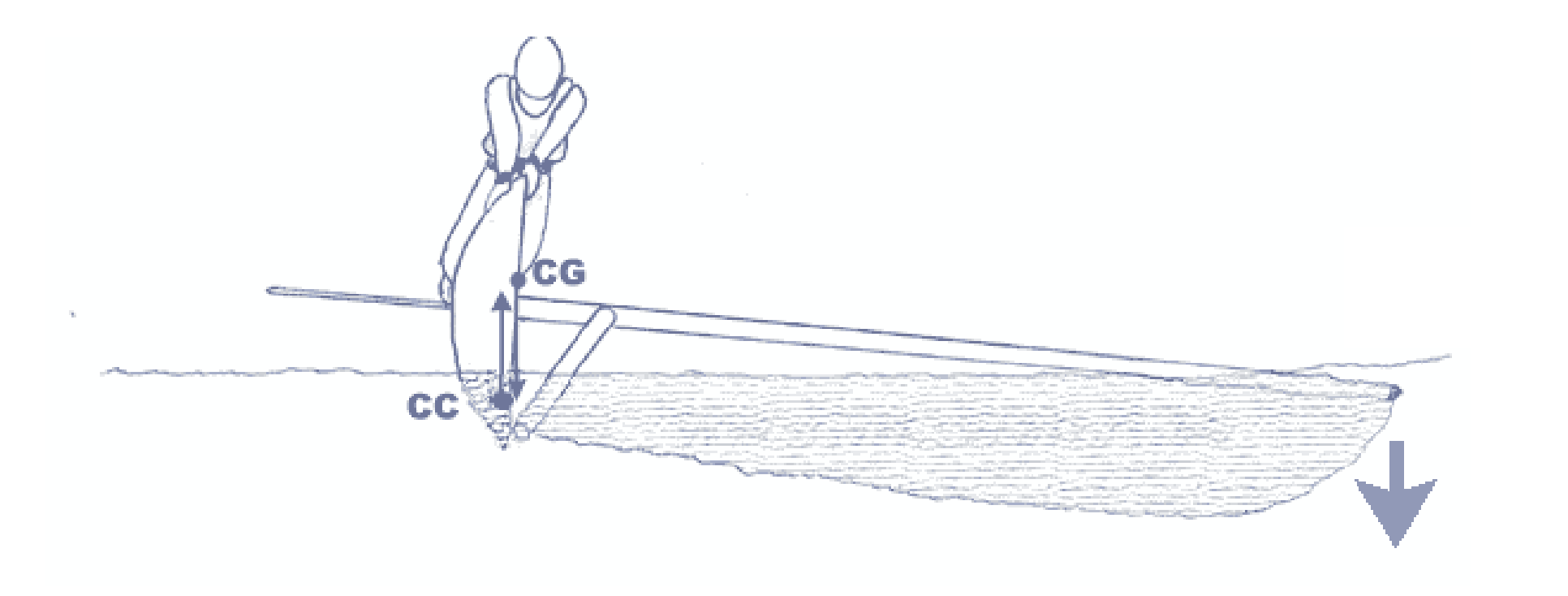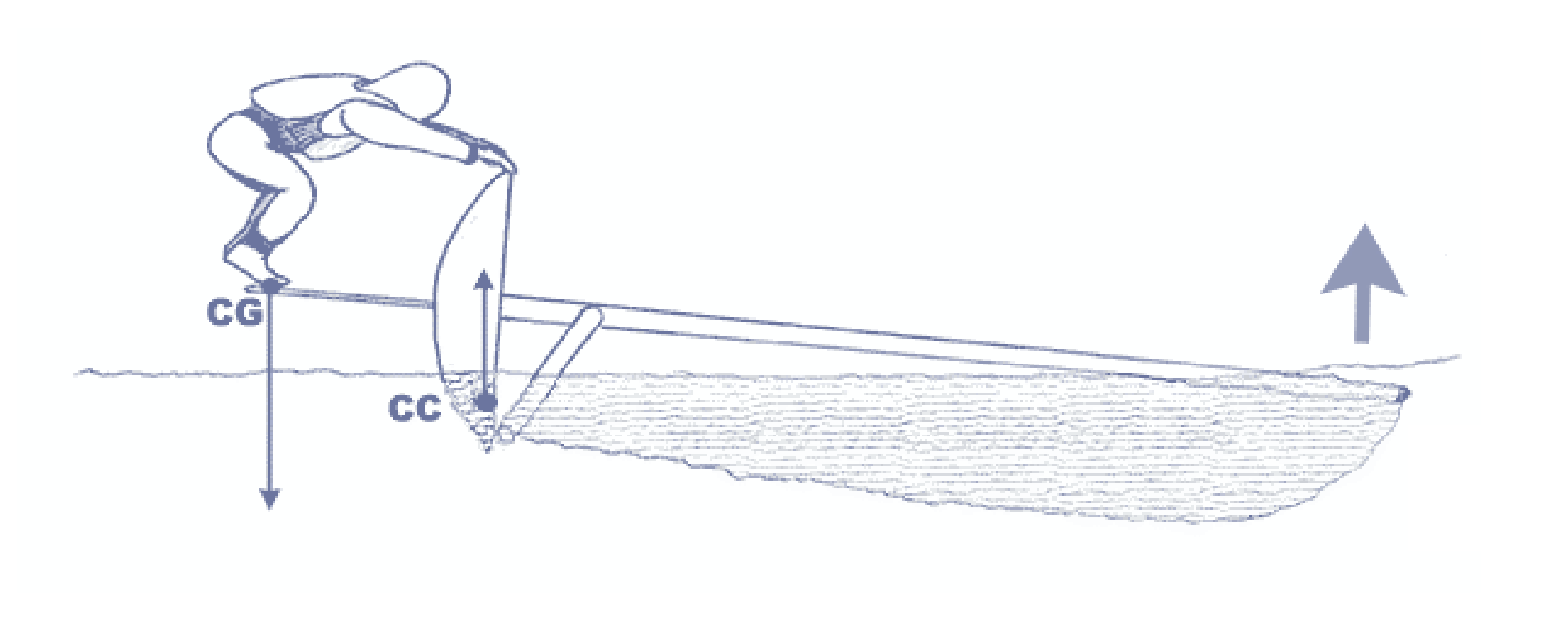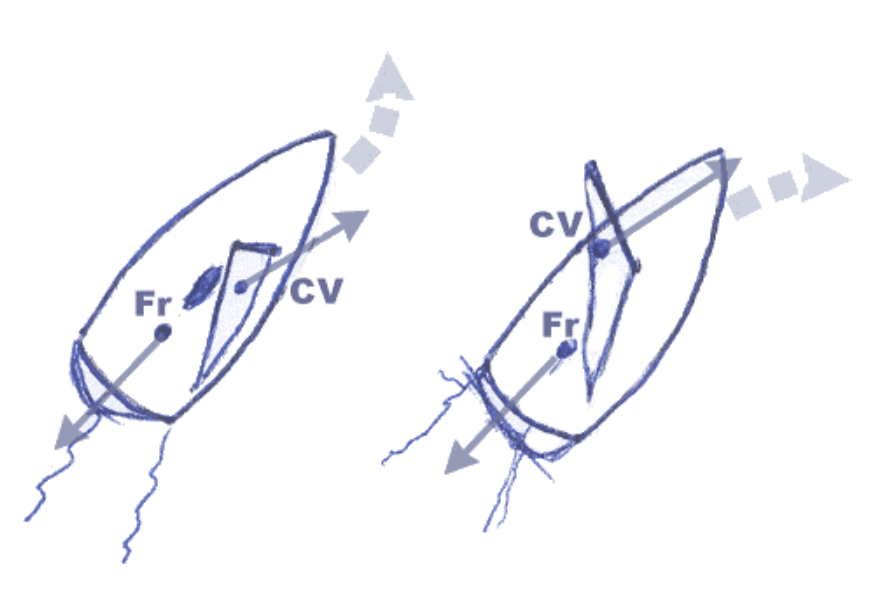Static balances #
The center of gravity #
The drifter has a center of gravity noted
\(CG\) , like any object entering the field of attraction of a planet, point of application of Newton's force: Gravity.This force is exerted vertically from top to bottom.
If we take the dinghy alone (without its crew), its center of gravity is invariable whatever the position of the boat.
On the other hand, once its crew is on board, this center of gravity can be modified according to the position of the navigator(s).

Center of gravity
It can also vary depending on how much water has entered the boat during navigation.
The center of hull #

Centerline
The hull center (CC) of a dinghy is the center of gravity of its submerged part.
At the center of the hull, Archimedes’ thrust applies.
It is exerted vertically from bottom to top.
Desalting #

Desalting

Ressalage
Dynamic equilibrium #
Downwind balance
Lateral balance downwind is often tricky.
At issue is the force couple created by the aerodynamic force (Fa) and the resistance of the hull (Fr) .

Balancing in a tailwind
To eliminate this torque, on round-hulled dinghies, a slight counter-heel is preferred so that the point of application of the aerodynamic force and that of the hull drag align and balance the boat.
Balance under other points of sail
Flat boat #

Balance of the flat boat
Let’s assume that gravity, buoyancy, aero and hydrodynamic forces, and hull drag all act in the same vertical plane.
We therefore assume that there is no problem of lateral trim.
If the point of application of the buoyant thrust is aft of the anti-drift force, the sailboat luffs because it is fiery.

Balancing the boat flat
Reversing or advancing the centerboard is possible in dinghies thanks to: The forward or backward movement of the mast Adjusting the mast rake The modification of the boat’s pitch (forward or backward movement of the crew) Adjusting the sail draft
Heeled boat #

Heeled boat
On the other hand, counter-heeling offers a torque that brings the dinghy down. Hence the importance of sailing a flat boat to avoid course corrections with the helm, which slows the boat down enormously.
If in light weather, it is better to have a little heel, it is to help the sails position themselves correctly.
Summary table #
| Making your dinghy go upwind | Means | Making your dinghy go downwind |
|---|---|---|
| Tilt the mast backwards | Mast | Tilt the mast forwards |
| Tilt mast backward | Quest | Tilt mast forward |
| Increase surface area | Mainsail | Decrease surface area |
| Move backward sail hollow | Mainsail | Move forward sail hollow |
| Decrease sail hollow | Mainsail | Increase sail hollow |
| Decrease surface area | Jib | Increase surface area |
| Increase sail hollow | Jib | Decrease sail hollow |
| Decrease daggerboard | Daggerboard | Increase daggerboard |
| Move weight forward | longitudinal balance | Move weight backward |
| Increase boat list | lateral balance | Increase boat counter-list |
